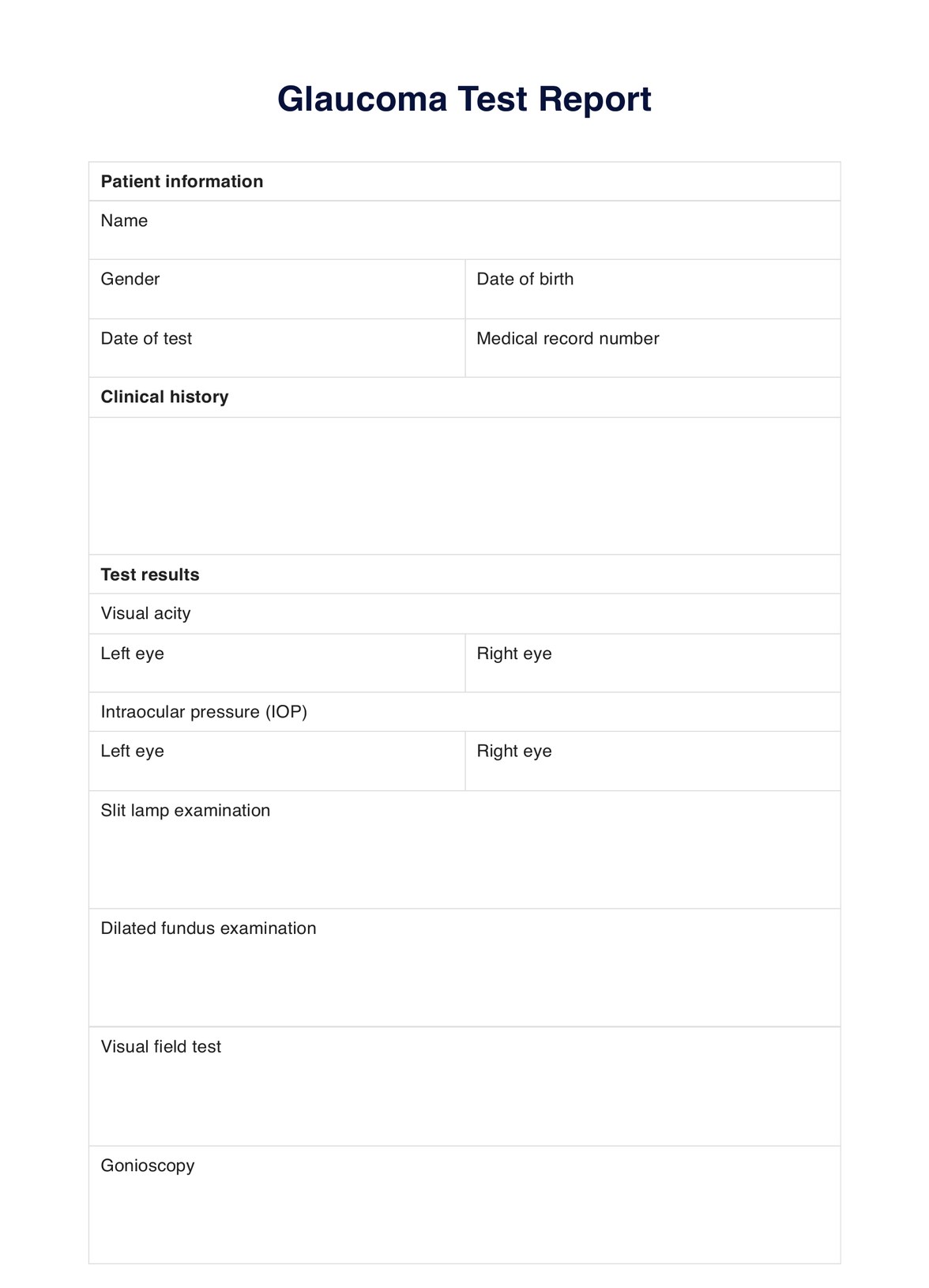Glaucoma Tests are usually requested by eye doctors or ophthalmologists to assess a patient's risk for developing glaucoma or to monitor the progression of the disease. In some cases, optometrists may also request these tests if they suspect a patient may have glaucoma.

Glaucoma Test Reports
Access a free Glaucoma Test Report template and example. Learn how to document patient results with ease.
Glaucoma Test Reports Template
Commonly asked questions
Glaucoma Tests are used to evaluate the eye's health and detect any abnormalities that may indicate a risk for developing glaucoma. They may also be used to monitor glaucoma progression in individuals already diagnosed with the disease.
The duration of a Glaucoma Test can vary depending on the specific tests being performed. Generally, it takes around 30 minutes to complete all three standard tests (nioscopy, OCT, and SLP). However, this may vary based on individual factors and the healthcare provider's equipment.
EHR and practice management software
Get started for free
*No credit card required
Free
$0/usd
Unlimited clients
Telehealth
1GB of storage
Client portal text
Automated billing and online payments











